China Cultural Notes
New vs. Old and Saving Historic Buildings
I’ve always loved the historic buildings in the village, but they are disappearing. China’s modernization has led to many people to adopt an “old=bad, new=good” mindset. New things can be great, but to demolish so many of the fascinating older buildings without a thought to the vast cultural heritage that’s being torn down brick by brick deeply saddens me.
For me, those old buildings in the village are incredibly beautiful. I like them so much, I had them as a background in some of the pics used to announce my engagement.
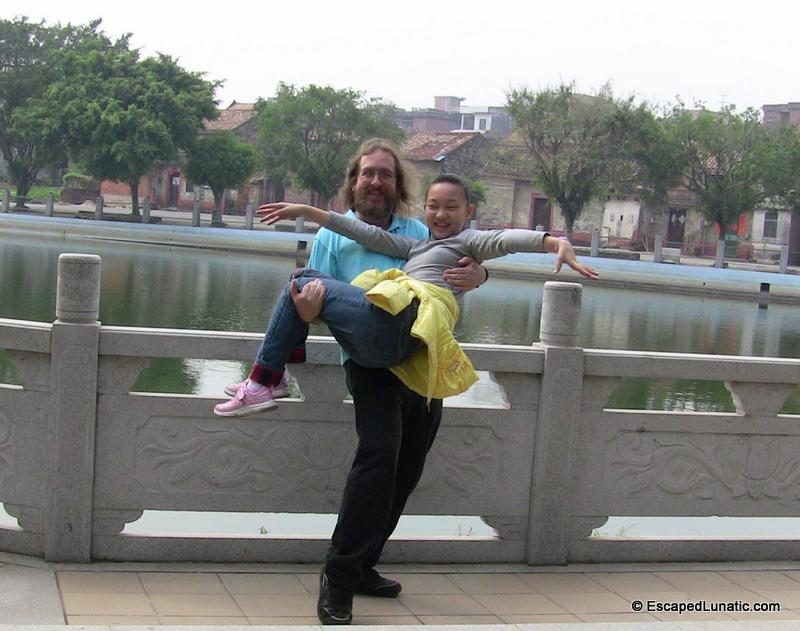
One of my engagement pics – Click the link above to see the whole story
As impressive as China’s history is, I still find something odd/ I know many Chinese people who proudly proclaim they are deeply attached to many thousands of years of Chinese history. For some reason, these same people seem to dislike real pieces of that history. They look at an older building as if it was nothing but a pile of rubble desperately in need of being swept away and replaced by a modern structure. My own wife leans this way, but I’ve dedicated myself to changing her point of view. It’s been an uphill fight, and I needed some reinforcements.
Architecture Students to the Rescue
Last week, my lovely wife and I were walking home from the village market. Having just purchased a pair of whiteboards (so we can each have our own competing shopping list ![]() ), I was, with the greatest of dignity, balancing the boards on my head. Although this method for carrying things is not unknown in some nearby countries, it’s rare in China. My skill in carrying things on my head resulted in me getting a little more attention than usual as we walked along the front side of the village pond.
), I was, with the greatest of dignity, balancing the boards on my head. Although this method for carrying things is not unknown in some nearby countries, it’s rare in China. My skill in carrying things on my head resulted in me getting a little more attention than usual as we walked along the front side of the village pond. ![]()
At this point, a group of college students approached and wanted to chat. They were architecture students from the South China University of Technology in Guangzhou. Someone told them that there was a true Lunatic running loose in the village. I’m sure the whiteboards on my head made me the prime suspect. ![]()
It turns out that they were there to try to find a way to help preserve some of the older buildings in the village, especially those in front of the pond. Naturally, I was very happy to talk to them.
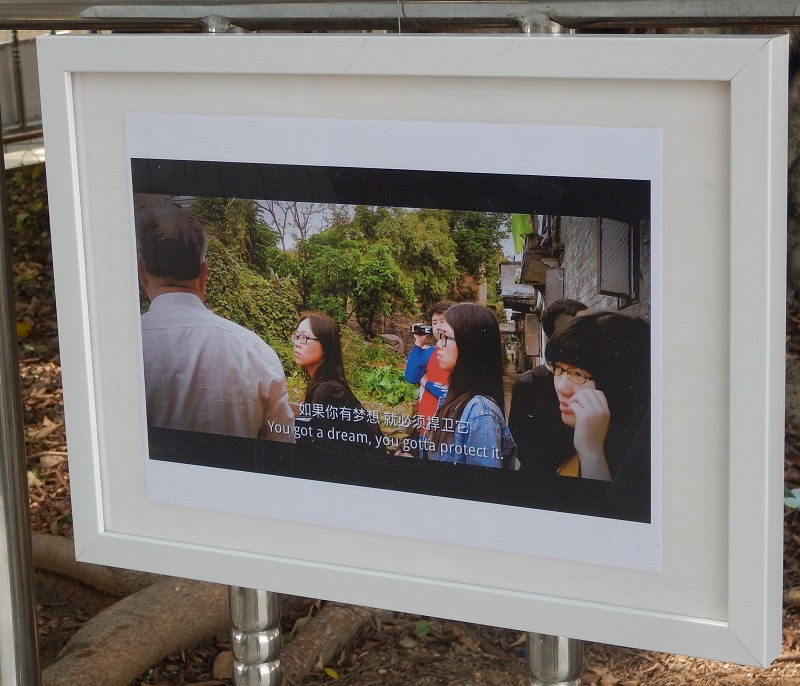
Architecture students who want to save historic buildings
It turned out that they planned to display some photographs and paintings of many of the village’s historic buildings. They thought this could help to instill a greater sense of pride in the history of the village. I wasn’t sure how well this would work, but thought it was worth a try. I told them I was looking forward to seeing their artwork on display.
The next evening, my wife and I were heading the other way along the pond so I could spend a little time playing on one of the exercise machines (I have to get ready for June’s Dragon Boat races ![]() ) and we bumped into the students again, along with their professor. They decided to interview me on camera (why does this sort of thing usually happen when I’m dressed up for exercising?
) and we bumped into the students again, along with their professor. They decided to interview me on camera (why does this sort of thing usually happen when I’m dressed up for exercising? ![]() ) about my views on the subject.
) about my views on the subject.
I explained that preserving historical architecture while making room for new construction is a challenge worldwide. Naturally, not all historic buildings can be kept in any country, but surely there must be some way to preserve a reasonable number of examples of each major style.
I also told them how much I love living in the village. The people are amazingly warm and friendly. The Qing Dynasty era (and possibly older) buildings along the pond are spectacular and contribute a great deal to the relaxed atmosphere here. I feel keeping enough of these intact is important to help preserve the history of this part of China.
One old house is already rented to an artist. The professor had told me he was going to propose renting out some of the old houses to artists and tourists. This could turn what some village residents now view as useless old buildings into a good source of income. I hope the idea catches on and works well. Maybe I could get a new job as a guide for foreign tourists. ![]()
The next day I went hunting for the students. I didn’t find them. I did find their display. The pictures were all framed and hung on the railing around one of the village’s ancient banyan trees. (600+ years I’m told. The mango trees on the back side of the pond are a little over 500 years old.)
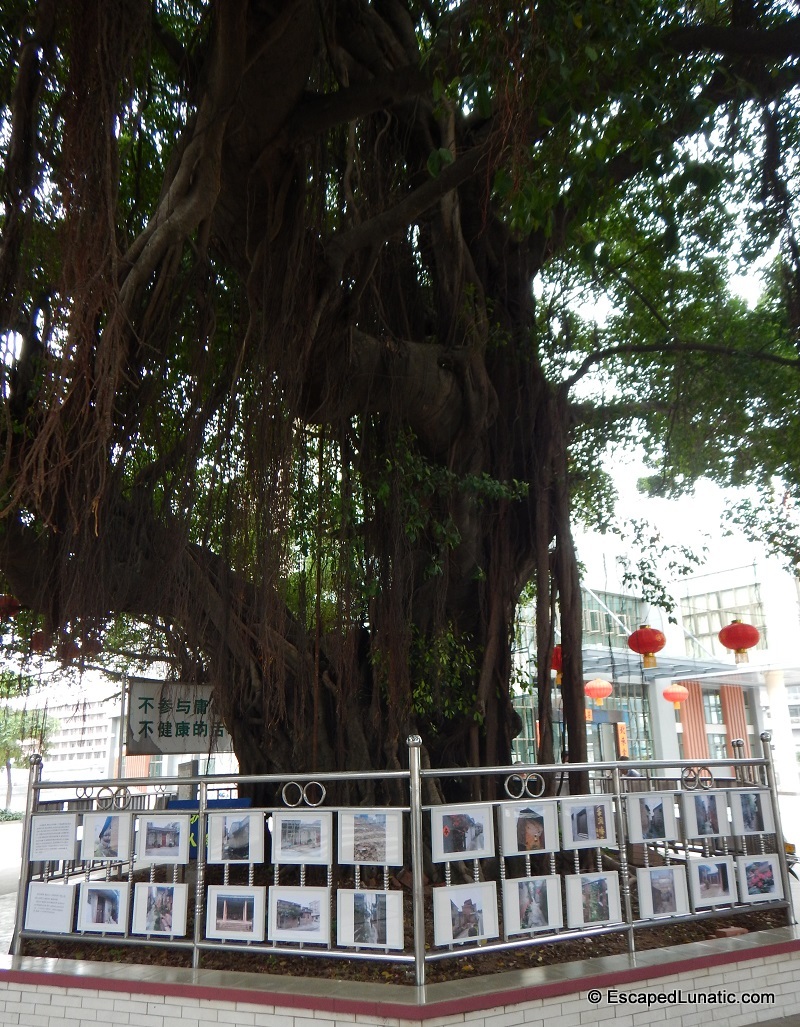
Art beneath an ancient tree
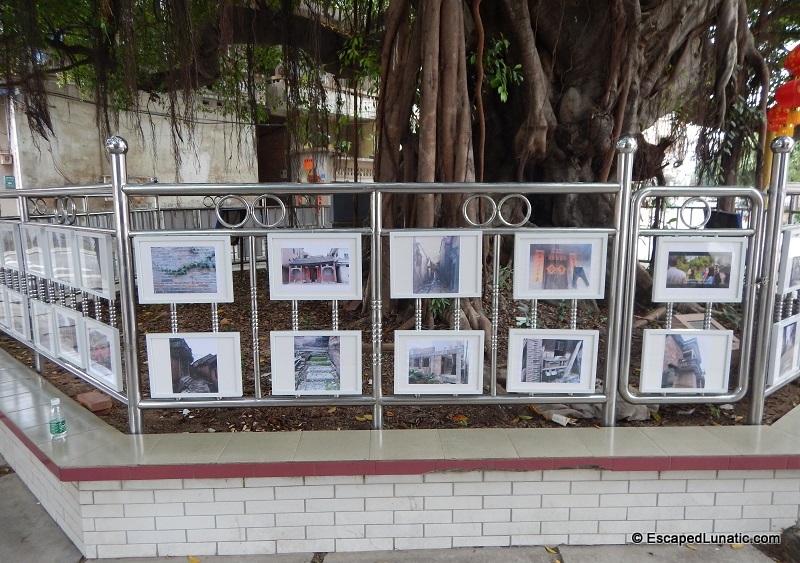
Historic architecture as art
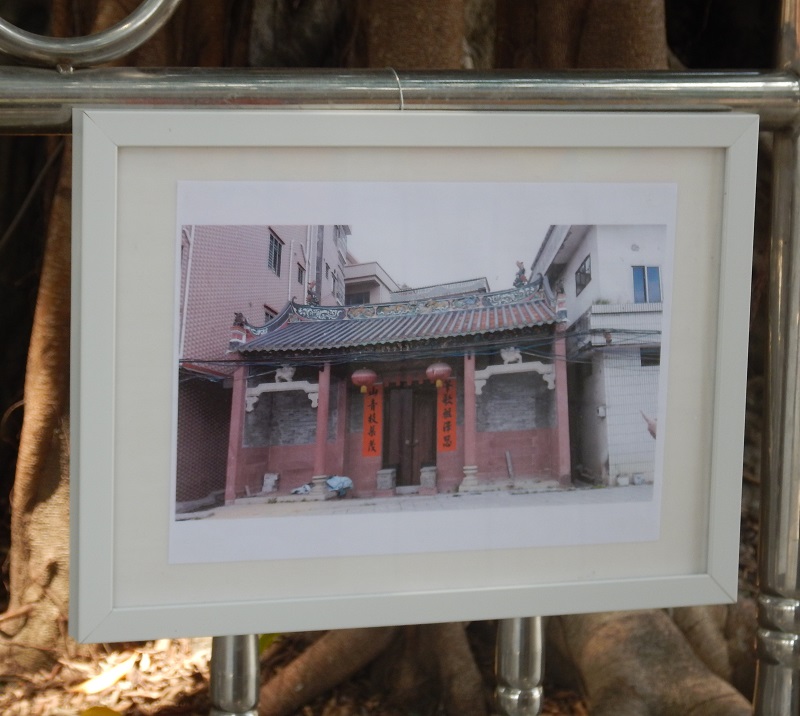
A framed photo of one of the restored historic houses
What to me was more impressive than the display itself was the number of people who stopped and spent time looking at it. Singly, and in groups, they checked out each image. I think seeing the buildings they’d known all their lives as “those old houses down the street” portrayed instead as objects of art, culture, and history had the desired effect. ![]()
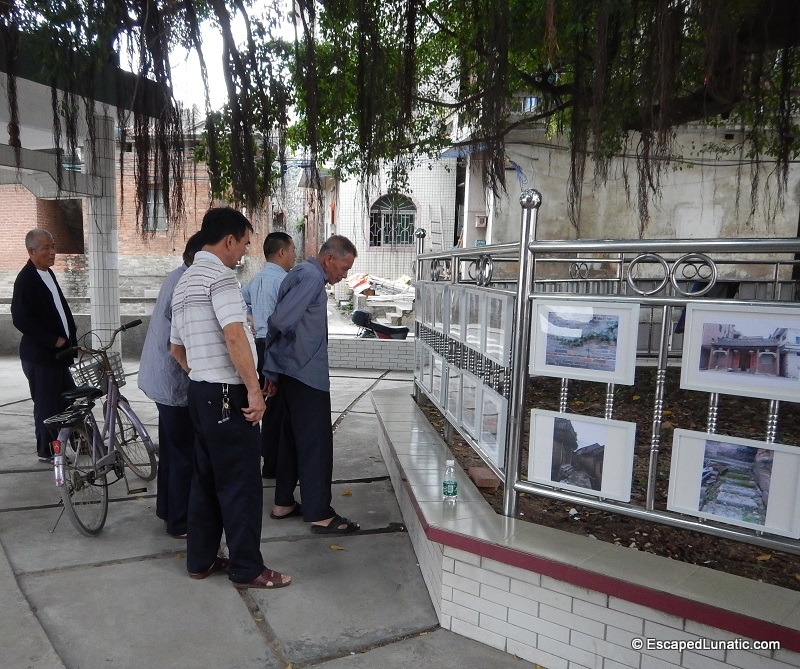
Some of my fellow villagers viewing the exhibit of historic buildings
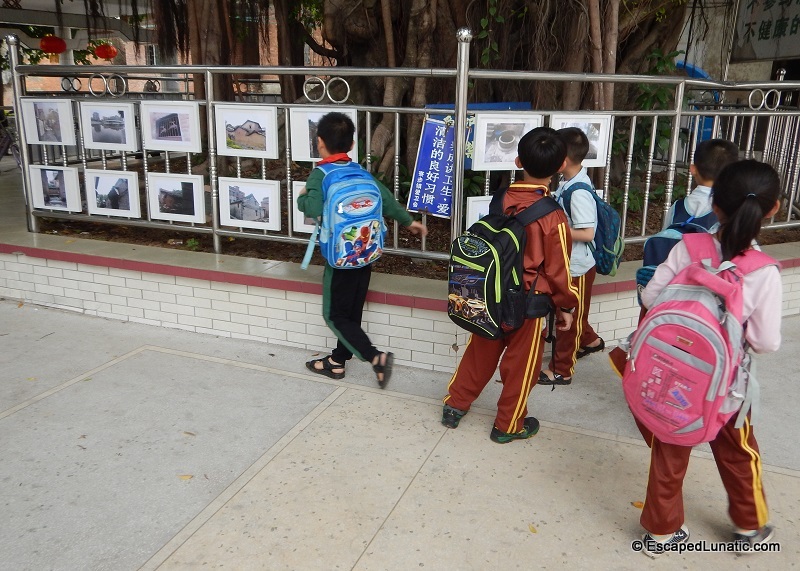
Some of the children liked the exhibit too
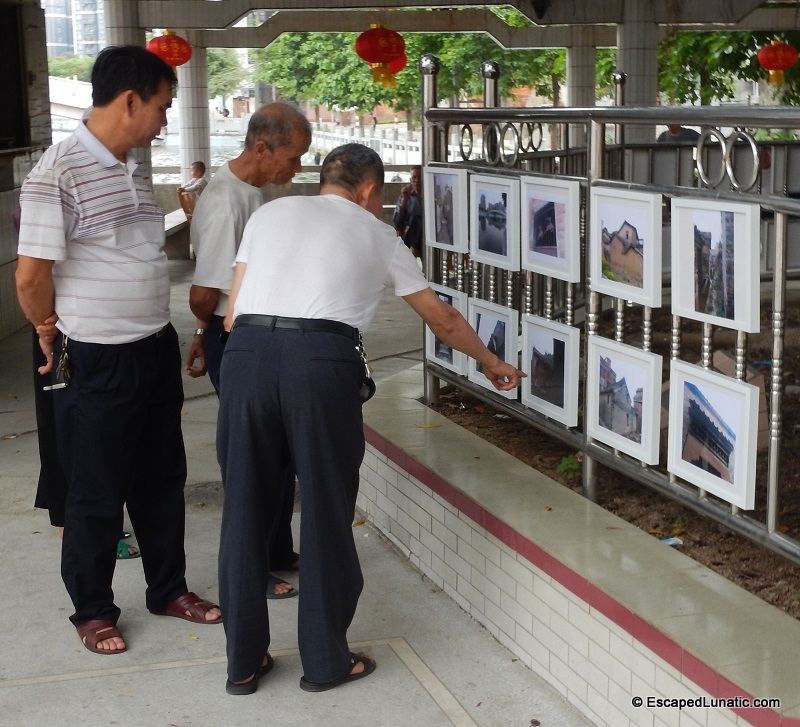
Hey look! It’s my house!
I’m really hoping this works well in the long run. What I’ve seen so far gives me hope. ![]()